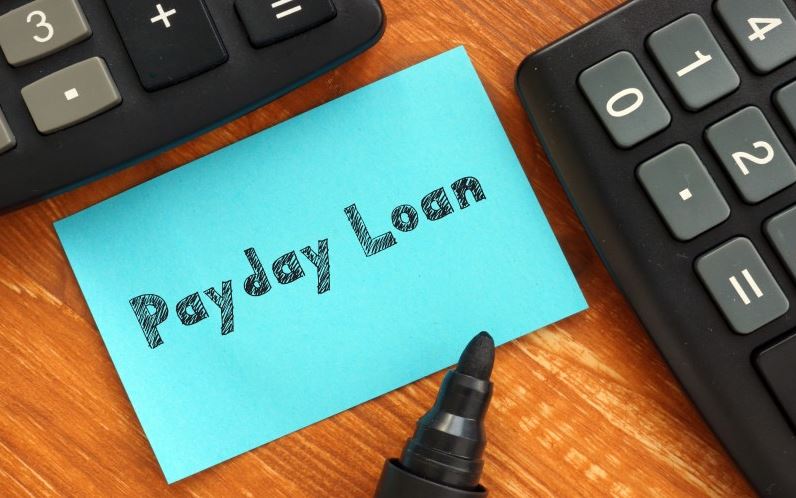Introduction
In an ever-evolving financial landscape, payday loans have been a topic of both controversy and necessity for many individuals. These short-term, high-interest loans have provided a lifeline for those facing immediate financial crises but have also drawn criticism for their predatory nature. As we peer into the future of payday loans, we must consider how this financial tool will adapt to meet the changing needs of consumers while addressing concerns related to its negative impact on vulnerable populations.
The Current State of Payday Loans
Before delving into the future, it’s essential to understand the current state of payday loans. These loans typically offer small amounts of money for a short period, often until the borrower’s next paycheck. However, the high annual percentage rates (APRs) associated with payday loans can make them a costly option. Critics argue that the cycle of debt that can result from these loans disproportionately affects low-income individuals and can lead to a spiral of financial distress.
The Future Landscape
- Regulation and Oversight
One of the most significant changes we can expect to see in the future of payday loans is increased regulation and oversight. Many countries and states have already implemented stringent rules to protect borrowers from exploitative lending practices. In the coming years, we can anticipate even stricter regulations aimed at curbing predatory lending.
These regulations may include interest rate caps, limits on loan rollovers, and mandatory affordability checks. The goal is to ensure that payday loans are offered responsibly and that borrowers are not trapped in a cycle of debt. Governments and consumer advocacy groups will continue to push for greater transparency and fairness in the industry.
- Alternative Lending Models
As concerns about payday loans persist, alternative lending models are emerging to provide consumers with better options. In the future, we can expect to see a rise in these alternatives, including:
- Salary Advance Programs: Some employers are beginning to offer salary advance programs as part of their employee benefits. These programs allow workers to access a portion of their earned wages before their regular payday, often without interest or fees. As more employers adopt such programs, employees may have a more financially stable alternative to traditional payday loans.
- Peer-to-Peer Lending: Peer-to-peer lending platforms connect borrowers with individual investors willing to provide loans at competitive rates. This model eliminates the need for traditional banks or payday lenders, offering a more community-based approach to borrowing and lending.
- Microloans: Microloans, often associated with microfinance institutions, provide small, low-interest loans to individuals and small businesses in need. As these institutions gain traction and expand their services, they could become a viable alternative for those seeking small, short-term loans.
- Digital Transformation
The future of payday loans will be profoundly influenced by digital transformation. Online payday lending has already become prevalent, allowing borrowers to access funds quickly and conveniently. However, this convenience has also made it easier for predatory lenders to operate.
To counteract this, we can expect to see advancements in technology that empower consumers while improving industry transparency. This could include:
- Digital Identity Verification: Advanced identity verification technologies will play a crucial role in ensuring that loans are provided only to eligible borrowers. This will reduce fraud and protect consumers from unauthorized lending.
- Credit Scoring Innovations: The use of alternative data sources, such as a borrower’s digital footprint and transaction history, will enable lenders to make more accurate lending decisions. This may open up access to credit for those with limited traditional credit histories.
- Blockchain and Smart Contracts: Blockchain technology and smart contracts can automate lending processes, ensuring that loan terms are transparent and immutable. This will help build trust between borrowers and lenders.
- Financial Literacy Education
Another aspect of the future of payday loans involves a greater emphasis on financial literacy education. Many individuals turn to payday loans due to a lack of understanding about alternative financial options or the true cost of borrowing. Governments, schools, and financial institutions will work together to provide accessible financial education to empower consumers to make informed decisions about their finances.
Conclusion
The future of payday loans is evolving in response to the growing need for accessible short-term financing and the desire to protect vulnerable borrowers from predatory lending practices. We can anticipate increased regulation, the proliferation of alternative lending models, and the continued influence of digital transformation in this industry. Ultimately, the goal is to create a financial landscape where individuals have access to safe and affordable credit options while being equipped with the knowledge to make sound financial choices. By addressing the shortcomings of payday loans and embracing innovation, we can pave the way for a more equitable and financially secure future.
